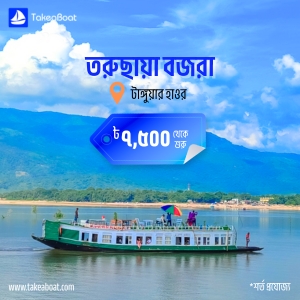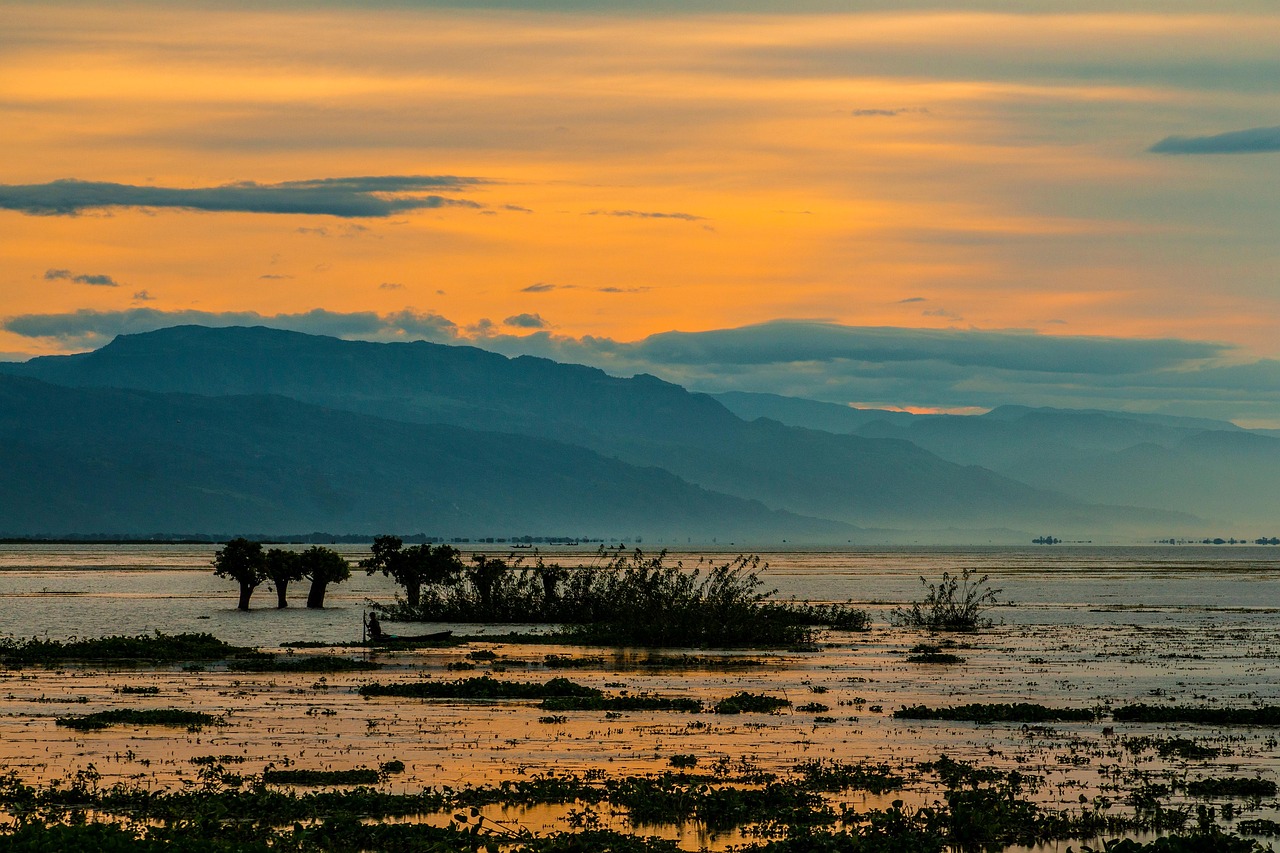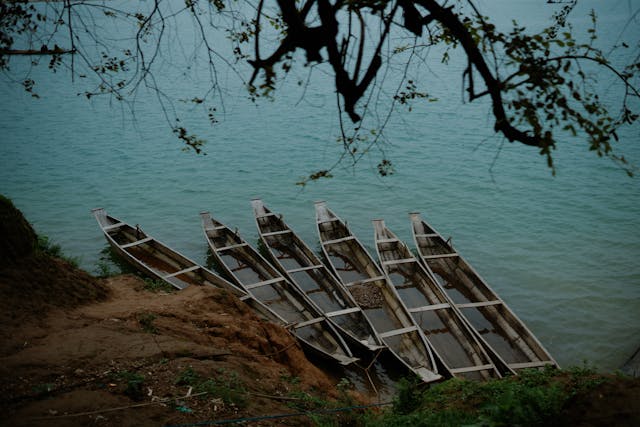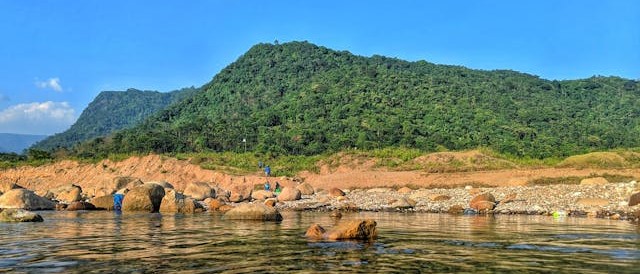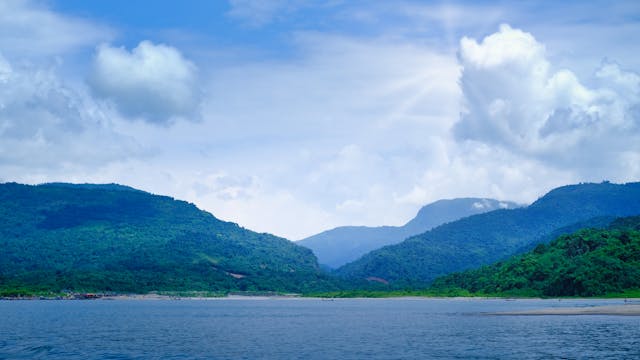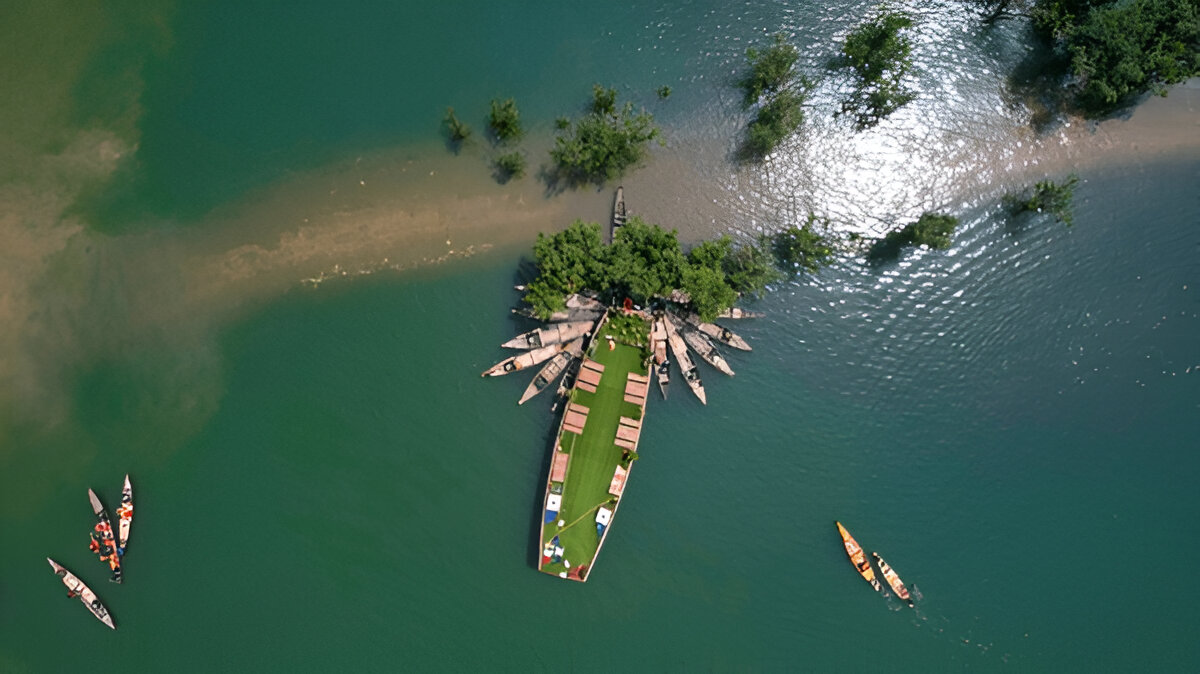Why Tanguar Haor Should Be on Every Eco-Traveler’s Bucket List
Why Tanguar Haor Should Be on Every Eco-Traveler’s Bucket List
Imagine a place where endless stretches of water mirror the sky, where rare birds soar above untouched wetlands, and where local communities live in harmony with nature. This is Tanguar Haor, a hidden gem in Bangladesh that deserves a top spot on every eco-traveler’s bucket list. Nestled in the northeastern part of the country, Tanguar Haor is not just a destination—it’s an experience that blends breathtaking scenery with rich biodiversity and cultural depth. If you’re passionate about sustainable travel and exploring off-the-beaten-path wonders, this wetland paradise will captivate your heart.
Table of Contents
- Why Tanguar Haor Should Be on Every Eco-Traveler’s Bucket List
- What Is Tanguar Haor? A Natural Wonder of Bangladesh
- The Unmatched Biodiversity of Tanguar Haor
- The Serene Beauty That Captivates Every Visitor
- Cultural Insights: Life Around Tanguar Haor
- Why Tanguar Haor Is Perfect for Eco-Travelers
- Best Time to Visit Tanguar Haor
- How to Reach Tanguar Haor: A Traveler’s Guide
- Tips for a Responsible Visit to Tanguar Haor
- Challenges Facing Tanguar Haor and How Travelers Can Help
- Frequently Asked Questions (FAQs) About Tanguar Haor
- Conclusion: Add Tanguar Haor to Your Eco-Travel Bucket List
In this article, we’ll dive into why Tanguar Haor stands out as a must-visit spot for nature lovers and eco-conscious adventurers. From its ecological significance to its serene beauty, we’ll uncover the reasons this destination should be on your radar. Let’s explore what makes this Bangladeshi wetland a unique treasure for travelers seeking meaningful journeys.
What Is Tanguar Haor? A Natural Wonder of Bangladesh
Tanguar Haor is a vast freshwater wetland located in the Sunamganj district of Sylhet Division, Bangladesh. Spanning over 9,500 hectares during the monsoon season, it transforms into a massive inland sea, dotted with small islands and surrounded by lush greenery. Recognized as a Ramsar site—a wetland of international importance—it plays a critical role in supporting biodiversity and sustaining local livelihoods.
This ecological hotspot is home to hundreds of species of birds, fish, and plants, making it a paradise for wildlife enthusiasts. But beyond its natural allure, Tanguar Haor offers a glimpse into the lives of the fishing communities who depend on its resources. Visiting here isn’t just about sightseeing; it’s about connecting with nature and understanding the delicate balance of life in a wetland ecosystem.
Have you ever dreamed of floating on a boat through a landscape that feels like a painting? At Tanguar Haor, that dream becomes reality. Let’s uncover the reasons why this destination is a must for eco-travelers.
The Unmatched Biodiversity of Tanguar Haor
A Haven for Birdwatchers
One of the biggest draws of Tanguar Haor is its incredible avian diversity. During the winter months, this wetland becomes a sanctuary for migratory birds traveling from as far as Siberia and Europe. Species like the Baikal Teal, Ferruginous Duck, and Pallas’s Fish Eagle can be spotted here, alongside resident birds such as kingfishers and herons. For birdwatchers, it’s nothing short of a paradise.
Bringing a pair of binoculars and spending a quiet morning observing these winged wonders is an experience you won’t forget. The sheer number of birds—over 140 species—makes Tanguar Haor a key stop on any eco-traveler’s itinerary in Bangladesh.
Aquatic Life and Flora
Beyond birds, the wetland teems with aquatic life. With over 200 species of fish, including rare varieties like the Airbreathing Catfish, Tanguar Haor supports a thriving ecosystem. The water is also adorned with vibrant aquatic plants like water lilies and lotus, creating a picturesque setting for boat rides.
This rich biodiversity isn’t just a treat for the eyes; it’s a reminder of why preserving such areas is crucial. As an eco-traveler, witnessing this balance of life firsthand can inspire a deeper commitment to environmental conservation.
The Serene Beauty That Captivates Every Visitor
Picture yourself on a wooden boat, gliding through calm waters as the sun rises over Tanguar Haor. The horizon blends seamlessly with the water, and the only sound is the gentle splash of oars. This is the kind of peace that modern life often steals from us. The wetland’s beauty is most striking during the monsoon, when it swells into a vast, shimmering expanse, and in winter, when the water recedes to reveal grassy patches and small islands.
Unlike crowded tourist spots, Tanguar Haor offers solitude and serenity. It’s a place where you can disconnect from the chaos of daily life and reconnect with nature. Whether you’re a photographer capturing the perfect sunrise or simply someone seeking tranquility, this destination delivers on every front.
Have you ever felt truly at peace in a place? If not, Tanguar Haor might just be where you find it.
Cultural Insights: Life Around Tanguar Haor
Eco-travel isn’t just about nature; it’s also about understanding the people who call these places home. The communities around Tanguar Haor, primarily fishermen and farmers, have a deep connection to the wetland. Their lives revolve around the seasonal rhythms of the haor, from fishing during the monsoon to cultivating rice in the dry season.
Visiting local villages offers a chance to learn about their traditions, taste fresh fish straight from the water, and even join them for a boat ride. These interactions add a layer of authenticity to your journey, making it more than just a scenic trip. Supporting these communities through responsible tourism can also contribute to their sustainable development.
Isn’t it incredible how travel can bridge cultures and create shared understanding? At Tanguar Haor, you’ll find that human connection is just as enriching as the natural beauty.
Why Tanguar Haor Is Perfect for Eco-Travelers
Eco-travelers seek destinations that align with their values—sustainability, conservation, and minimal environmental impact. Tanguar Haor checks all these boxes. Here’s why it’s an ideal spot for those who travel with purpose:
- Untouched Nature: Unlike over-commercialized tourist spots, this wetland remains largely unspoiled, offering an authentic experience.
- Conservation Opportunities: By visiting, you contribute to awareness and efforts to protect this vital ecosystem.
- Low Carbon Footprint: Traveling here often involves simple, eco-friendly methods like boat rides and staying in local homestays.
If you’re someone who wants to explore the world without harming it, Tanguar Haor offers a guilt-free adventure. It’s a chance to witness nature’s raw beauty while supporting its preservation.
Best Time to Visit Tanguar Haor
Timing your visit to Tanguar Haor can make all the difference in your experience. The wetland transforms with the seasons, each offering a unique perspective:
- Monsoon (June to October): The haor is at its fullest, creating a vast water world perfect for boat rides and photography. However, heavy rains can make travel challenging.
- Winter (November to February): This is the best time for birdwatching, as migratory birds flock to the area. The weather is also cooler and more comfortable.
- Dry Season (March to May): The water levels drop, revealing grassy landscapes and making it easier to explore on foot or by smaller boats.
Planning your trip during winter or early spring ensures a balance of pleasant weather and vibrant wildlife activity. When would you prefer to visit—a water-filled wonderland or a birdwatcher’s haven?
How to Reach Tanguar Haor: A Traveler’s Guide
Reaching Tanguar Haor requires a bit of effort, but the journey is part of the adventure. Start by traveling to Sylhet, the nearest major city, which is well-connected by air, train, and bus from Dhaka, Bangladesh’s capital. From Sylhet, take a local bus or hire a private vehicle to Sunamganj, about a 2-3 hour drive.
Once in Sunamganj, rent a boat from the local market to explore the haor. Boats are the primary mode of transport here, and local boatmen often double as guides, sharing stories and insights about the area. Be sure to negotiate fares in advance and carry essentials like water, snacks, and sunscreen, as facilities in the haor are minimal.
Pro tip: Travel with a small group to split costs and enhance safety. The remote location adds to the charm but also means you need to plan ahead.
Tips for a Responsible Visit to Tanguar Haor
As eco-travelers, it’s our responsibility to leave no trace and respect the environment we explore. Here are some tips to ensure your visit to Tanguar Haor is sustainable:
- Avoid littering; carry a reusable bag for waste and dispose of it properly.
- Use eco-friendly products, like biodegradable sunscreen, to minimize harm to the water.
- Respect local customs and seek permission before photographing people or their homes.
- Support the local economy by buying handmade goods or hiring local guides.
By traveling mindfully, you help preserve Tanguar Haor for future generations. Isn’t it rewarding to know your journey can make a positive impact?
Challenges Facing Tanguar Haor and How Travelers Can Help
Despite its beauty and significance, Tanguar Haor faces threats like overfishing, pollution, and climate change. Rising water levels and changing weather patterns disrupt both the ecosystem and the livelihoods of locals. As travelers, we can play a role in its protection by:
- Spreading awareness about the importance of wetlands through social media or blogs.
- Supporting conservation initiatives or local NGOs working to safeguard the area.
- Advocating for sustainable tourism practices during your visit.
Every small action counts. By choosing to travel responsibly, you become part of the solution to protect treasures like Tanguar Haor.
Frequently Asked Questions (FAQs) About Tanguar Haor
1. What is Tanguar Haor, and where is it located?
Tanguar Haor is a vast freshwater wetland in Bangladesh, located in the Sunamganj district of Sylhet Division. It’s a Ramsar site known for its biodiversity, scenic beauty, and cultural significance, often referred to as one of Bangladesh’s natural wonders.
2. Why should I visit Tanguar Haor as an eco-traveler?
Tanguar Haor is perfect for eco-travelers due to its untouched natural beauty, rich wildlife (including over 140 bird species), and sustainable travel opportunities. It offers a chance to connect with nature and support local communities while maintaining a low environmental impact.
3. When is the best time to visit Tanguar Haor?
The best time to visit depends on your interests. Winter (November to February) is ideal for birdwatching with migratory birds and pleasant weather. Monsoon (June to October) showcases the haor as a vast water body, while the dry season (March to May) reveals grassy landscapes for easier exploration.
4. How do I get to Tanguar Haor from Dhaka?
First, travel to Sylhet from Dhaka via air, train, or bus. From Sylhet, take a local bus or hire a vehicle to Sunamganj (about 2-3 hours). Finally, rent a boat in Sunamganj to explore Tanguar Haor, as boats are the main mode of transport in the wetland.
5. What kind of wildlife can I see at Tanguar Haor?
Tanguar Haor is a biodiversity hotspot with over 140 bird species, including migratory ones like the Baikal Teal, and over 200 fish species. You’ll also see aquatic plants like water lilies and lotus, making it a paradise for nature lovers and photographers.
6. Is Tanguar Haor safe for tourists?
Yes, Tanguar Haor is generally safe for tourists, but its remote location means you should plan ahead. Travel in small groups, hire local guides or boatmen, and carry essentials like water and sunscreen since facilities are limited. Respecting local customs also ensures a smooth experience.
7. How can I help protect Tanguar Haor during my visit?
You can help by practicing responsible tourism: avoid littering, use eco-friendly products, respect the local environment and culture, and support conservation efforts. Spreading awareness about the haor’s importance and supporting local communities through sustainable purchases also makes a difference.
Conclusion: Add Tanguar Haor to Your Eco-Travel Bucket List
Tanguar Haor is more than just a destination; it’s a testament to the beauty and fragility of nature. From its unparalleled biodiversity to its tranquil waters and vibrant local culture, this Bangladeshi wetland offers an unforgettable experience for eco-travelers. Whether you’re a birdwatcher, a nature lover, or simply someone seeking peace, Tanguar Haor promises a journey that touches both the heart and soul.
So, why wait? Start planning your trip to this hidden paradise and discover the magic of one of Bangladesh’s most stunning natural wonders. By visiting responsibly, you not only enrich your own travel story but also contribute to the preservation of this ecological gem. Where will your next eco-adventure take you—could Tanguar Haor be the answer?
Follow us on Facebook and Instagram for more travel tips and updates!

Shafat Mahmud Khan
Related content
Interdum et malesuada fames



